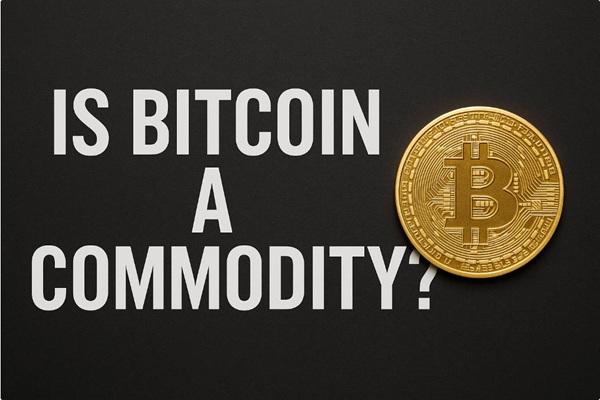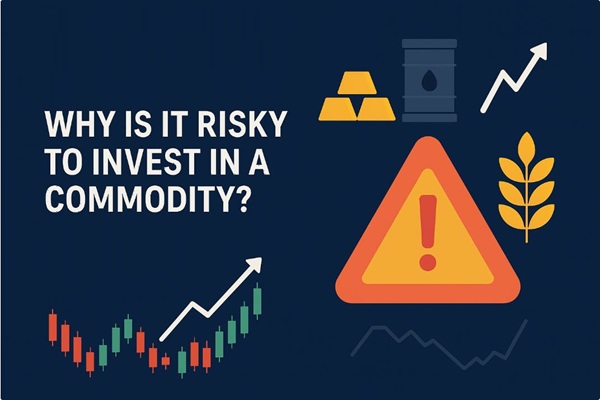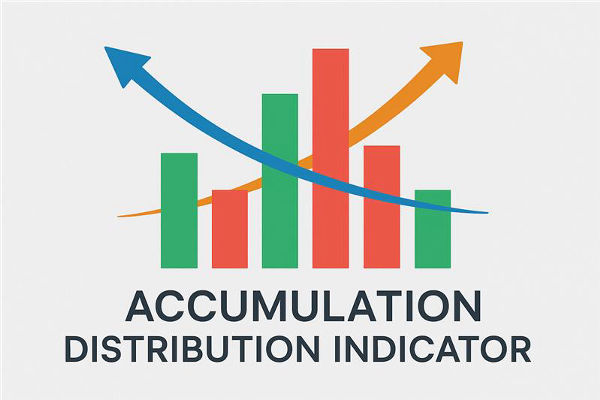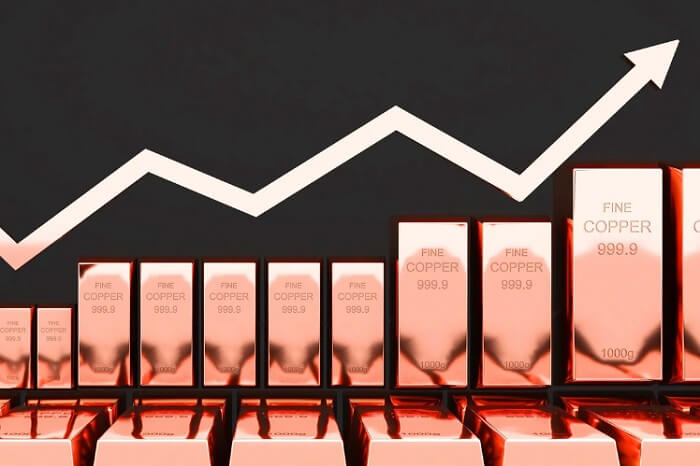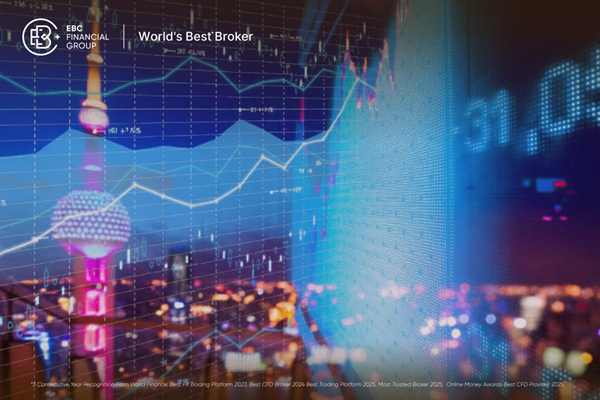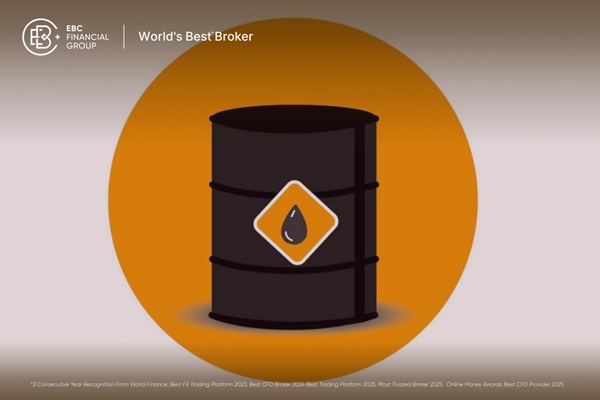In finance, a commodity is a raw material, from oil to coffee, that investors trade via futures, ETFs, and spot markets.
Commodities have been at the heart of human trade for centuries, forming the very foundation of markets long before financial securities or modern banking existed. From the spice routes of Asia to the gold rushes of North America, commodities have shaped economies, empires, and everyday life. Yet in today's financial world, the term "commodity" carries both a simple meaning and a highly specialised role in global trade and investment.
What is a commodity: definition & fungibility
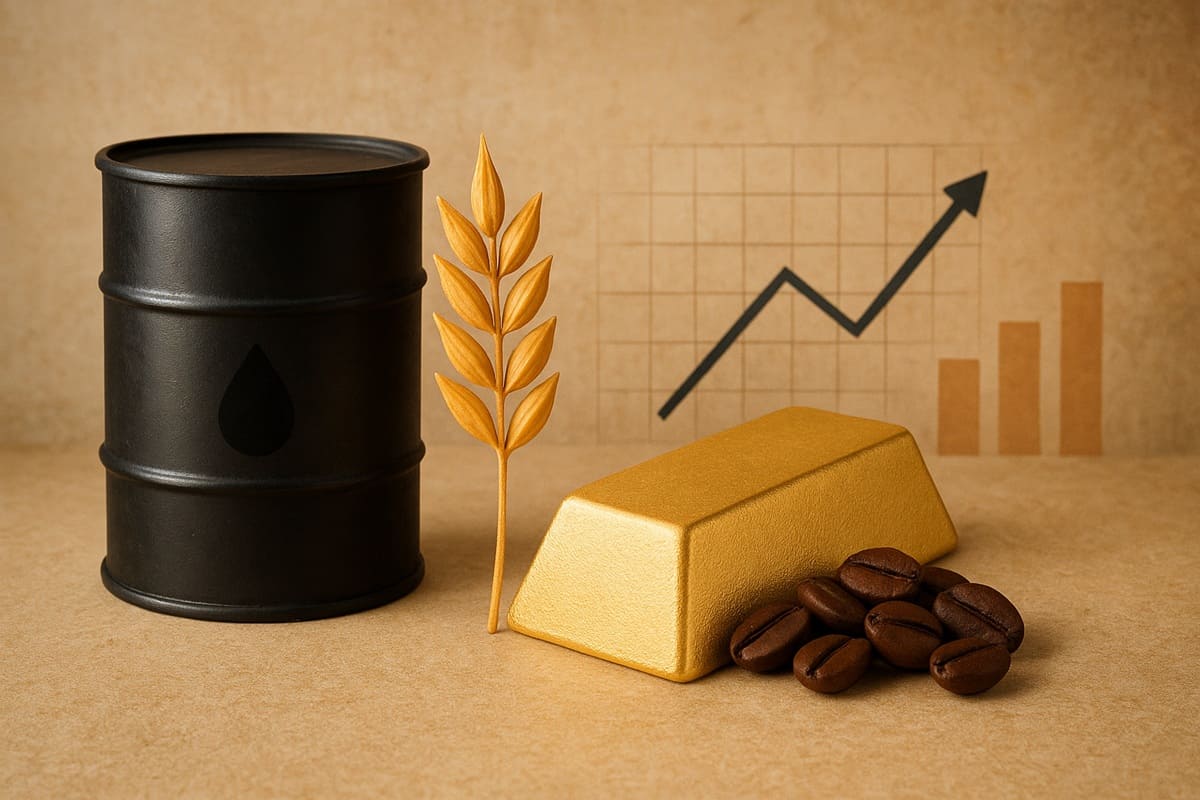
At its core, a commodity is a basic good that is fungible—that is, interchangeable with another unit of the same type regardless of who produces it. For instance, one barrel of crude oil of a standard grade is considered equivalent to another barrel of the same grade, irrespective of the oil company that extracted it.
This idea of fungibility differentiates commodities from branded products. While a designer handbag carries unique features that set it apart, a bushel of wheat or an ounce of gold holds the same market value as any other of the same quality. Commodities therefore represent the raw building blocks of the global economy, forming the input materials for food, energy, construction, and manufacturing industries.
What types of commodities are traded worldwide?
Economists and market participants commonly group commodities into two broad categories:
Hard commodities – These are natural resources that are mined or extracted, such as crude oil, natural gas, coal, gold, silver, and copper. Hard commodities tend to be heavily influenced by geopolitical factors, technological advances, and supply chain disruptions.
Soft commodities – These are agricultural or livestock products grown or bred rather than mined. Examples include wheat, maize, soybeans, coffee, cocoa, sugar, cotton, and cattle. Because they rely on weather, harvest conditions, and seasonal cycles, soft commodities are often more volatile than hard ones.
This classification helps investors and traders understand the risks and drivers behind different commodity groups, but it also reflects their crucial role in human survival and development—energy to fuel economies and food to sustain populations.
What are some common examples of commodities?
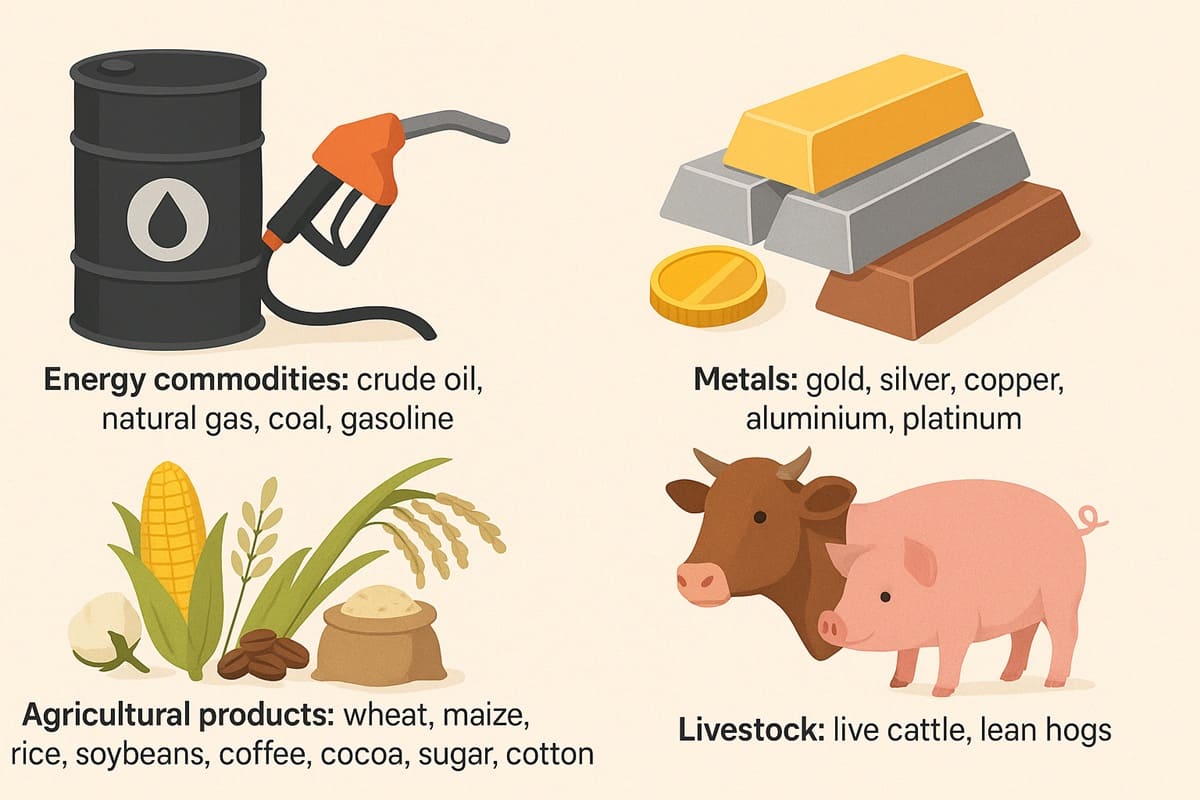
The universe of commodities is remarkably broad. Some of the most traded examples include:
Energy commodities: crude oil, natural gas, coal, gasoline
Metals: gold, silver, copper, aluminium, platinum
Agricultural products: wheat, maize, rice, soybeans, coffee, cocoa, sugar, cotton
Livestock: live cattle, lean hogs
These are standardised on exchanges through contracts that specify grades and qualities. For instance, the Chicago Board of Trade (CBOT) has precise specifications for wheat futures contracts, ensuring that all wheat traded under the contract is of a standard grade. This standardisation allows producers, consumers, and investors from all corners of the globe to trade commodities without ambiguity over quality.
How are commodities standardised for trading on exchanges?
Commodities would not function as efficiently in global markets without standardisation and organised exchanges. Exchanges such as the Chicago Mercantile Exchange (CME), the London Metal Exchange (LME), and the New York Mercantile Exchange (NYMEX) act as central marketplaces where buyers and sellers trade standardised contracts.
These contracts specify quantity, quality, delivery date, and location. For example, a gold futures contract might stipulate 100 troy ounces of gold with 99.5% purity, to be delivered to an exchange-approved vault. This ensures that when a buyer and seller agree to a trade, there is no dispute over what is being exchanged.
The role of exchanges is also critical in price discovery. By bringing together thousands of participants—from farmers to multinational corporations and hedge funds—they establish transparent prices that reflect global supply and demand.
How do market dynamics shape the value of commodities over time?
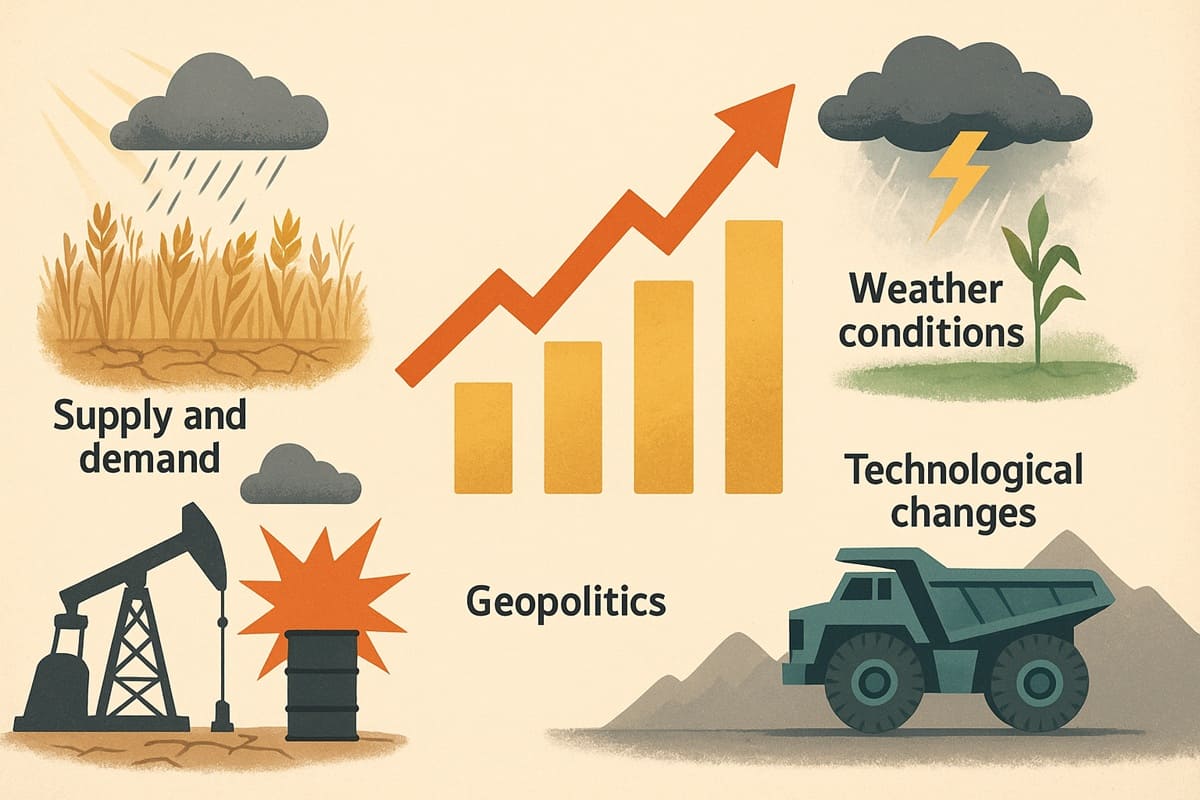
The prices of commodities are constantly shifting, influenced by a range of interconnected factors:
Supply and demand: A poor wheat harvest due to drought can drive prices up, while an oversupply of oil can push prices down.
Weather conditions: Agricultural commodities are particularly sensitive to unexpected weather events such as floods, frosts, or hurricanes.
Geopolitics: Conflicts in oil-producing regions or trade sanctions can disrupt supply chains, leading to sharp price swings.
Technological changes: Advances in mining or energy extraction can increase supply and reduce costs.
Macroeconomic trends: Inflation, currency fluctuations, and global growth also play crucial roles.
Because commodities are the backbone of production and consumption, their prices ripple through entire economies, affecting everything from fuel costs to food prices.
How are commodities traded in financial markets?
Beyond their practical use, commodities have become a significant asset class for investors. They can be traded in various ways:
Spot markets: Immediate delivery and settlement of physical goods.
Futures contracts: Agreements to buy or sell a commodity at a predetermined price at a future date. These are widely used for hedging—for instance, an airline company might buy futures contracts to lock in fuel prices.
Exchange-traded funds (ETFs) and indices: Allow investors to gain exposure to commodities without trading futures directly.
Derivatives and options: Provide more sophisticated strategies for speculation or risk management.
For investors, commodities are attractive because they often serve as a hedge against inflation. When inflation rises, commodity prices—particularly energy and metals—tend to increase as well. Moreover, commodities have historically had a low correlation with equities and bonds, making them a useful tool for diversification.
Conclusion
A commodity is more than just a raw material—it is a cornerstone of global trade, economics, and financial markets. Defined by its fungibility, standardisation, and universal demand, a commodity can be anything from oil and gold to wheat and coffee. Its price reflects not only the balance of supply and demand but also the forces of geopolitics, weather, and technological innovation.
For producers and consumers, commodities are necessities. For traders and investors, they are opportunities. And for the global economy, they remain the lifeblood of growth and stability.
Frequently Asked Questions (FAQ)
Q1: What is a commodity in finance and trade?
A: A commodity is a basic, standardised good—such as oil, gold, wheat, or coffee—that is interchangeable and traded globally on markets.
Q2: What are the different types of commodities?
A: Commodities are mainly classified as hard commodities (metals and energy resources like gold and crude oil) and soft commodities (agricultural products and livestock such as wheat, coffee, and cattle).
Q3: How are commodity prices determined?
A: Prices of commodities are influenced by supply and demand, weather conditions, geopolitical events, production costs, and overall market dynamics.
Disclaimer: This material is for general information purposes only and is not intended as (and should not be considered to be) financial, investment or other advice on which reliance should be placed. No opinion given in the material constitutes a recommendation by EBC or the author that any particular investment, security, transaction or investment strategy is suitable for any specific person.













